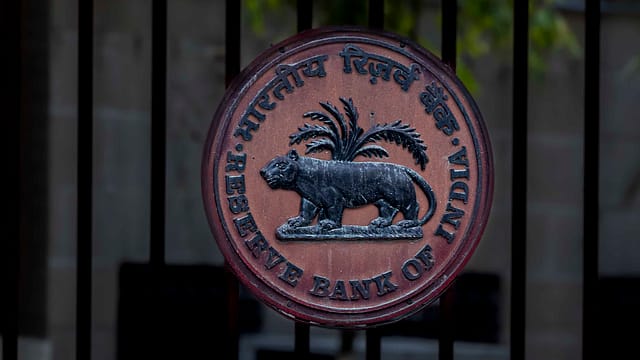RBI opens the doors for bank-funded M&As
ADVERTISEMENT

In a history policy shift, the Reserve Bank of India (RBI) has announced that it will pave the way for banks to finance mergers and acquisitions (M&As) by Indian corporates. The move unveiled as part of the central bank’s bi-monthly policy statement for 2025-26, will be a realignment of the funding options available for Indian corporates and a new avenue to earn income for domestic banks.
Until now, banks were barred from funding acquisition of shares, a restriction that lends on the sidelines of India’ rapidly growing M&A markets where deal activity topped $50 billion in the first half of the calendar years. Corporates have increasingly relied on global investment banks, and offshore lenders for acquisition financing.
In fact, at a recent IBA event, State Bank of India chairman CS Setty had urged the regulator to allow lenders to participate in M&A financing, particularly for listed companies where transparency is high. Setty contextualised his argument by stating that India Inc had deleveraged and built significant cash reserves, estimated at Rs 13.5 lakh crore, and that their long-term funding needs for expansion and strategic growth could be met solely through internal accruals or capital markets.
November 2025
The annual Fortune India special issue of India’s Best CEOs celebrates leaders who have transformed their businesses while navigating an uncertain environment, leading from the front.
Between FY15 and FY25, bank credit to industry has grown from ₹26.6 lakh crore to ₹38.1 lakh crore, implying a CAGR of around 3.7%, credit to large enterprises within this segment grew from ₹21.5 lakh crore to ₹27.2 lakh crore, at a slower CAGR of around 2.3%. This relatively muted growth over a decade is why bankers, facing limited expansion in traditional corporate lending, want to fund M&As as a fresh avenue for credit deployment.
Not surprising that Setty welcomed the RBI move. “The withdrawal of framework related to specified borrowers and allowing of M&A financing by Indian banks are growth accretive and will foster incremental credit flow from banks,” said Setty.
For instance, in the case of the $10.5 billion buyout of ACC-Ambuja by Adani Group, the conglomerate in 2023 raised a $3.5-billion loan from 10 international banks. Usually, such loans have a senior tranche and a mezzanine tranche. The senior tranche is raised at Libor-plus 200 bps or so, while the mezzanine tranche can cose between 13% and 15%. Whether or not such borrowings will move to Indian banks remains to be seen.
While leveraged buyouts (LBOs) in India are rare, the Tatas had very resorted to LBO-style transaction in 2000, when Tata Tea (now Tata Consumer Products) had acquired the UK-based Tetley. Tata Tea contributed only a small amount in equity, while the remaining significant amount was financed through debt which was overseas by a special purpose vehicle.
However Vishal Goenka, co-founder of IndiaBonds.com, an online platform that provides access to investors in the fixed-income market, says the concept of an LBO is to strip down the equity to bare minimum, and take a lot of debt funding, which lenders are happy to provide. But it won’t be what India banks would look at or allowed to. “I don’t think we’re at that advanced stage where the complexities of LBOs come in straight away. Will it change in the next 2–3 years? Maybe. But for now funding will become cheaper for sure. If I have to fund a buyout at 12% versus 8–9%, the economics of acquisitions change and will spur economic and capital-market activity,” Goenka tells Fortune India.
Interestingly, under the RBI’s master circular on loans and advances, Indian banks are permitted to finance acquisitions of equity stakes abroad, whether in overseas joint ventures, wholly owned subsidiaries, or even unrelated foreign entities, provided these qualify as strategic investments and comply with Section 19(2) of the Banking Regulation Act, 1949. In contrast, domestic buyouts are off-limits for banks.
The Reserve Bank of India also plans to make it easier for corporates to borrow overseas through external commercial borrowings (ECBs). Rules around ECBs expressly prohibit their use, under the automatic route, for acquiring shares. The central bank is also planning to remove restrictions on the end-use of ECBs.
The central bank believes that India’s capital market has matured significantly, while domestic banks have strengthened their balance sheets and improved their risk management.
Draft guidelines are set to be issued shortly, but the central bank’s intent is to give domestic banks a seat at the table in funding the next wave of corporate consolidation. For India Inc., the timing couldn’t be better. The availability of domestic bank financing could accelerate consolidation and push Indian champions onto the global stage.
Market participants expect a phased implementation, likely with financing acquisitions of listed companies, as SBI’s Setty suggested.
